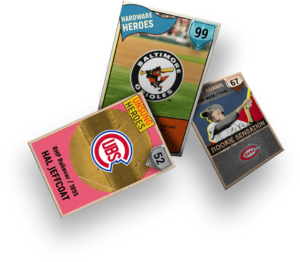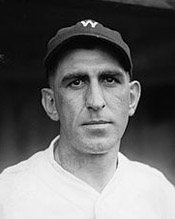

The manager visits the pitcher on the mound. The pitcher deliberately attempts to hit the batter with a pitch. This option is typically used when you don't want to risk pitching to a very dangerous hitter, especially if there is no runner on first base. The pitcher intentionally walks the hitter. This option is typically used when you expect a runner to try to steal. The pitcher 'pitches out' (throws a ball well wide of the hitter so that the catcher has a better chance to throw out a runner). This option is often used when a dangerous hitter is up, and you're willing to walk him rather than give up a big hit. The pitcher pitches to the batter, but is very careful, and thus likely to throw a ball. The following options are available when you are controlling the defensive team. For example, the Hold Runners option is not available unless there is a runner on base. Some options are not available unless a specific game situation occurs. The Game Control page displays a number of options that can be selected with numbers on the keypad, or by clicking the buttons with your mouse. This option is typically used when you want to protect a lead and don't want to let balls get behind your outfielders for extra-base hits. This option is typically used late in a game when a runner is on base who represents the tying or winning run, and you want to prevent the run from scoring-at the risk of having a ball hit over an outfielder's head that he would normally have been able to catch. Outfielders play in (closer to home plate). You can change these options only if your team is in the field. Choose one of these options to change how your outfield is playing. The outfield options are displayed in a drop-down in the top of the Game Control pane. This option is often used when a very strong pull hitting left-handed hitter is at bat, to increase the chance of successfully fielding a ball that is pulled to the right side of the infield. The second baseman, shortstop, and first basemen all play between second and first base. This option is often used when a very strong pull hitting right-handed hitter is at bat, to increase the chance of successfully fielding a ball that is pulled to the left side of the infield. The second baseman, shortstop, and third basemen all play between second and third base. This option is often used to prevent teams from getting extra-base hits, at the risk of a greater chance of allowing a single. The first and third basemen play closer to their respective bases than usual, preventing balls from going down the lines.

This option is frequently used when a bunt from a left-handed batter is expected. This option is frequently used when a bunt from a right-handed batter is expected. This option is frequently used when a bunt is expected. This option is usually used in a close game, with a runner on third, when you want to prevent the runner from scoring at all costs.

The infielders play in (closer to home plate). Choose one of these options to change how your infield is playing. The infield options are displayed in a drop-down in the top of the Game Control pane. You can switch between these modes at any time. However, it also offers a greater degree of control. Of course, Pitch-by-Pitch mode takes significantly longer than One Pitch Mode. In One Pitch Mode, you choose just one strategic play, and the computer simulates all pitches in the at-bat. In this mode, you control each pitch in the game, one at a time. OOTP Baseball has two in-game modes: One Pitch Mode and Pitch-by-Pitch mode, controlled by a button in the lower right corner of the Game Controls pane: The options available change depending on whether you are controlling the team currently in the field or the team currently at bat. The Game Control pane is where you control the actual play-by-play of the game.


 0 kommentar(er)
0 kommentar(er)
